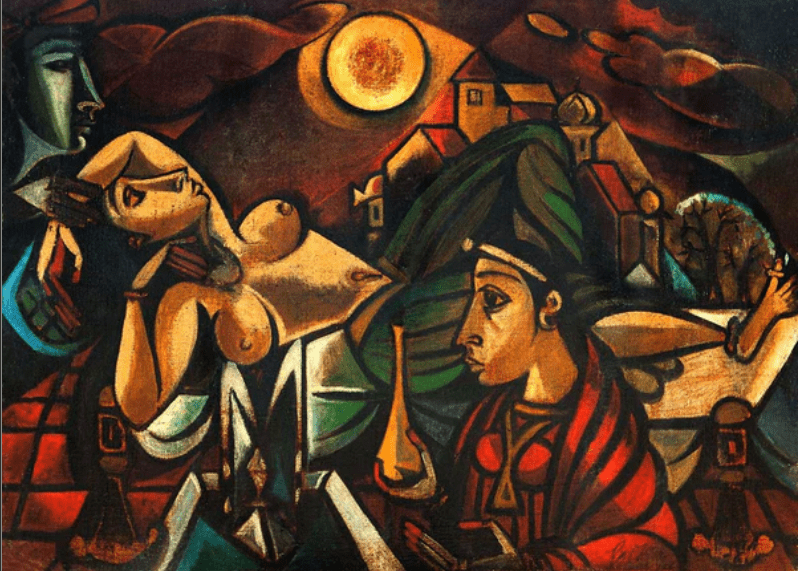Art and Luxury: When Fashion, Jewelry, and Paintings Collide
Art and Luxury: When Fashion, Jewelry, and Paintings Collide
The worlds of art and luxury have always shared a close, almost symbiotic relationship. From the finely woven fabrics of haute couture to the intricate craftsmanship in high-end jewelry, luxury has been deeply influenced by artistic expression. Today, the boundaries between art, fashion, and jewelry have blurred more than ever, giving rise to unique creations that defy traditional categories. This fusion has not only redefined luxury aesthetics but also challenged how we interpret value, creativity, and cultural expression.
The Timeless Connection Between Art and Luxury
Luxury is often defined by rarity, craftsmanship, and exclusivity—all qualities inherent in fine art. In ancient civilizations, royal families adorned themselves with custom-made jewels, wore garments that symbolized their status, and commissioned grand paintings and sculptures to assert their power. These were not merely possessions but curated forms of cultural and aesthetic expression.
Fast forward to today, and the essence of this tradition continues. Luxury brands partner with celebrated artists, incorporate fine art techniques into their collections, and elevate their offerings from mere consumer goods to collector-worthy masterpieces. The convergence of art and luxury is not just about aesthetics—it is about storytelling, symbolism, and substance.
When Fashion Meets Fine Art
Fashion has long borrowed from the visual language of painting and sculpture. Designers like Yves Saint Laurent and Elsa Schiaparelli were pioneers in this regard. Saint Laurent’s 1965 Mondrian dress, inspired by the Dutch painter Piet Mondrian, is still remembered as a turning point in the dialogue between fashion and modern art.
Today, this relationship has evolved into full-blown collaborations. Louis Vuitton’s partnerships with artists like Takashi Murakami and Yayoi Kusama have brought contemporary art directly into wardrobes. These aren’t just clothes; they are wearable canvases.
Likewise, brands like Dior and Prada regularly integrate artistic motifs into their collections, drawing from movements like surrealism, expressionism, and abstract minimalism. For instance, Dior’s Spring 2020 Haute Couture collection drew inspiration from feminist art and included direct references to iconic artworks and installations.
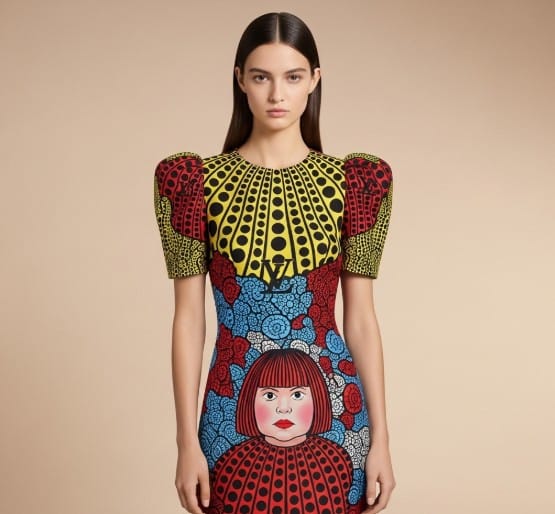
Jewelry as Miniature Artworks
Jewelry might be the most literal form of art-meets-luxury. Every piece is a micro-sculpture that blends design, technique, and cultural narrative. High jewelry houses like Cartier, Bulgari, and Van Cleef & Arpels have elevated this craft to fine art status.
Van Cleef & Arpels’ “Poetry of Time” watch collection is a brilliant example. These timepieces are not just about telling time; they depict celestial stories, nature’s beauty, and mythological scenes using enamel painting, miniature engraving, and precious stones.
Contemporary artists too have begun exploring jewelry as a medium. Artist Cindy Sherman created a jewelry collection in collaboration with the New York-based designer LizWorks, using her iconic photographic characters as references. The result? Jewelry that provokes thought, not just admiration.
Moreover, galleries like Louisa Guinness Gallery in London exclusively represent artists who create jewelry, blurring the line between wearable luxury and gallery-worthy art. These pieces are often exhibited in museums and sold in limited editions, treating them as collector’s items rather than accessories.
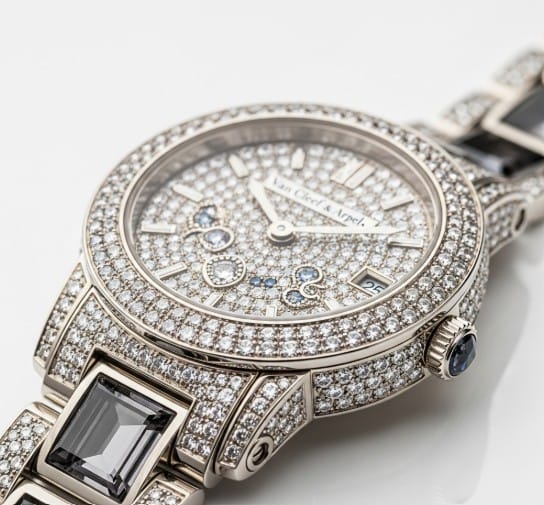
Paintings Inspiring Couture and Vice Versa
Paintings and fashion enjoy a two-way relationship. While fashion frequently draws from classic and modern art, some paintings take direct inspiration from fashion. The 19th-century painter John Singer Sargent painted high society women in their most luxurious gowns, immortalizing not just the individual but the fashion of the era.
Contemporary painters like Ashley Longshore and Alyssa Monks often use luxury fashion items as motifs, commenting on consumerism, identity, and power. Meanwhile, artists such as Kehinde Wiley reinterpret classical portraiture by replacing European nobility with contemporary subjects dressed in modern, sometimes lavish, fashion.
This crossover reflects a shift in how we view both art and fashion—not as static, separate entities but as part of a shared cultural dialogue. Fashion becomes part of the narrative, just as a brushstroke or composition does.
The Commercial and Cultural Value of the Fusion
In the luxury market, brand equity is often built on exclusivity and heritage. By aligning themselves with the world of fine art, fashion and jewelry brands deepen their narratives. A limited-edition handbag featuring a famous artist’s design instantly becomes a collectible item, transcending the typical lifecycle of a fashion accessory.
Collectors, too, are changing. The same person investing in a Rothko may also bid for a custom Alexander McQueen gown at Sotheby’s. Auction houses now list haute couture and high jewelry alongside contemporary art, acknowledging their interconnected appeal to luxury consumers.
According to a 2024 report by Art Basel and UBS, cross-category collectors are on the rise, with millennials showing particular interest in owning art-inspired fashion and design pieces. This convergence has opened new revenue streams for artists and designers alike, blurring industry boundaries and redefining luxury consumption.
Read the Art Basel and UBS Art Market Report
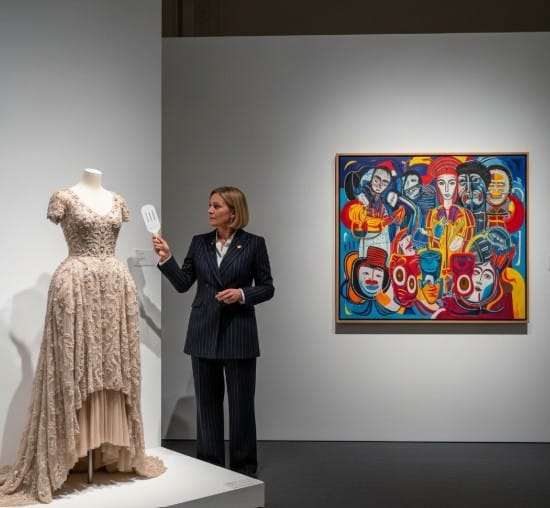
Technology’s Role in the Collision of Art and Luxury
The digital age has accelerated this fusion. Augmented reality (AR) and NFTs (non-fungible tokens) are new territories where art, fashion, and jewelry intersect. For example, Gucci launched a line of digital sneakers that users can “wear” in the metaverse. These digital shoes, while intangible, sold for hundreds of dollars.
Meanwhile, digital artists like Beeple collaborate with fashion brands to create immersive campaigns, blurring the line between commercial design and fine digital art. High-end jewelry companies are exploring digital try-ons with AR while simultaneously embedding blockchain for authenticity—making luxury both futuristic and foolproof.
NFTs have added a new layer of exclusivity and ownership to art-inspired fashion and jewelry. Virtual fashion shows, digital artworks as part of garment designs, and blockchain-backed ownership have created a new ecosystem that merges prestige, creativity, and technology.
Cultural Commentary Through Art and Luxury
Many collaborations between artists and luxury brands carry a deeper message. Dior’s “We Should All Be Feminists” campaign, inspired by Chimamanda Ngozi Adichie’s writing, used fashion as a medium for feminist discourse. Similarly, artist Nick Cave’s “Soundsuits”—wearable sculptures—challenge racial and gender stereotypes while also being celebrated in the fashion and art worlds.
Luxury has traditionally been associated with exclusivity and elitism. However, when it intersects with socially conscious art, it becomes a platform for change, expression, and dialogue. It pushes the idea that luxury can be meaningful—not just materialistic.
The Role of Collectors and Patrons
Collectors play a pivotal role in sustaining this confluence. They are not merely buyers but patrons who fuel innovation. By supporting projects where fashion meets painting or where a jewelry piece doubles as an artwork, they validate the cultural importance of these fusions.
Luxury conglomerates have also launched foundations and museums. The Fondation Louis Vuitton in Paris is a prime example. Designed by Frank Gehry, this museum exhibits contemporary art while celebrating the heritage of the luxury brand, thereby establishing an intellectual and cultural lineage.
Patrons of ISKUSS, for instance, understand that art rooted in tradition can find fresh expressions through collaboration. By supporting artists whose works blend traditional aesthetics with modern luxury, they ensure cultural continuity while embracing evolution.
Visit ISKUSS to explore curated art pieces that blend heritage with contemporary luxury.
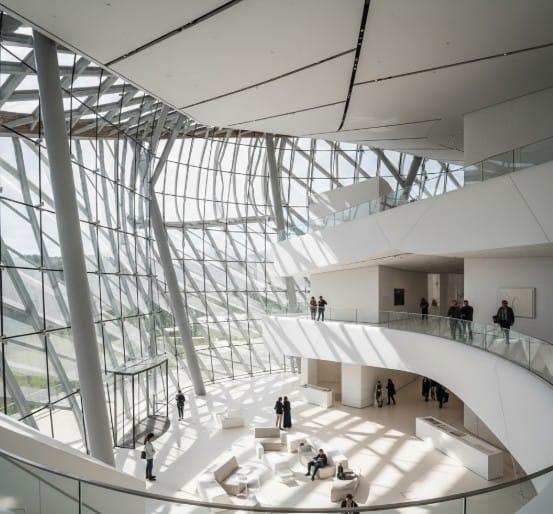
The Future of Art and Luxury
The convergence of art, fashion, and jewelry will only grow deeper. As consumers seek more meaningful purchases, the desire for products that combine beauty, craftsmanship, and cultural value will rise. Younger generations, especially Gen Z, are more interested in stories than status. They want luxury that speaks to their identity and values.
Expect more partnerships between emerging artists and established luxury houses. Also, local and indigenous art forms are gaining global attention, becoming part of high-fashion narratives. The future is multicultural, multidimensional, and meaning-driven.
Artificial intelligence might soon allow personalized luxury experiences where users can co-create fashion pieces or jewelry based on their artistic tastes. This will shift luxury from being brand-centric to collector-centric, much like the experience of commissioning a painting.
Conclusion: A New Renaissance of Expression
The intersection of art and luxury is not a trend—it is a renaissance. It revives the age-old tradition of art serving as both beauty and symbol, and elevates luxury from possession to expression. Whether it’s a diamond-encrusted brooch inspired by Indian temple art, or a digitally designed dress co-created with an AI artist, we are entering an era where every luxury piece tells a story.
For those who appreciate both art and indulgence, this convergence offers a way to experience beauty not just visually, but viscerally. It celebrates the human drive to create, to inspire, and to elevate the everyday into the extraordinary.

